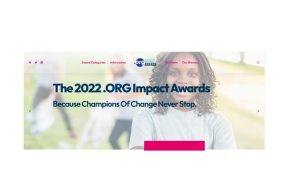Jane Goodall began studying chimpanzees in Africa during the 1960s. Today, the Jane Goodall Institute (JGI) continues that research and has expanded its works across Africa to include assisting the surrounding communities of people.
With its many works confined to remote areas of Africa, and many of its major donors in the United States, JGI in 2005 decided to connect the dots.
“We’d been running trips to East Africa, taking our board members to see our programs. That was so successful, we thought, ‘My gosh, we’ve got to do this with our major donors, too,’” said Sylvie Briscoe, manager of major gifts for JGI.
For many nonprofits that work internationally, the fruits of their labor are confined to far-off lands. Likewise with major donors, the fruits of their gifts are likewise confined. But as more organizations seek to increase major donor involvement and enhance awareness, they’re offering high-end adventures straight from the pages of National Geographic Magazine, private jet tours around the world, unique cruises to remote islands, as well as opportunities to go off the beaten path — in your own backyard.
The International Ecotourism Society (TIES) defines ecotourism as “responsible travel to natural areas that conserves the environment and improves the well-being of local people.” This concept has in recent years taken off exponentially as more Americans are taking an outward interest. And, donors are becoming equally intrigued by the impact of their dollars.
“That’s definitely the case,” Martha Honey, executive director of TIES in Washington, D.C., said of the upswing of interest in ecotourism. Honey attributed the trend to a quartet of circumstances unique to now:
n More developing nations and poor communities looking to ecotourism to help them protect local environments and alleviate poverty;
n Increased donor demand for what Honey called Experiential Tourism or Experiential Learning, including adventure travel, organic foods, and ecotourism;
n Baby Boomers beginning to retire, having disposable income, and wanting to see the world; and,
n A growing segment of the population who say travel is an important part of how they define themselves.
“We’re seeing many more nonprofits tapping into their major donors in this way,” said Honey, who said TIES will hold its first eco-tour for prospective major donors next month. The objective is to show the prospects close-up what ecotourism is all about, and to provide them a hands-on experience of the organization’s work, “with the idea of having them come on board as major donors,” added Honey.
Jane’s Peak Society, JGI’s leadership giving circle starting at $1,000 annually, inherited its name from the famous hilltop on an outcrop in Gombe National Park in Tanzania. The hilltop, where Goodall began her work with chimpanzees, is “the highest point where you can look out across the chimpanzees’ forest and get the perspective of everything else that we work on,” explained Briscoe.
“Everything else” now includes community-centered conservation, community development, gravitational water schemes set up to get water to villages with 20,000 people, and Roots & Shoots, a worldwide environmental and humanitarian program for youth. Still, added Briscoe, “obviously, chimps are at the absolute heart of our mission.”
The first trip, to Kenya and Tanzania for 10 days during February, 2005, was “sort of the classic African safari experience,” said Briscoe, with a lot of added value and behind-the-scenes experiences thrown in. “Each trip has a slightly different itinerary. Sometimes we start off in Uganda and see the chimpanzees at our sanctuary on Ngamba Island. We then go on to Olduvai Gorge, which is where Jane started with (Mary and) Louis Leakey before she went to Gombe,” said Briscoe. “Finally, they hike to Jane’s Peak to – if they’re lucky – meet the famous chimpanzees of Gombe.”
The between eight and 12 travelers then visit the Serengeti or Ngorongoro Crater, sometimes the Masai Mara Reserve in Kenya, and then off to Gombe where they have the rare opportunity to witness Goodall’s TACARE program, a training and education program on sustainable natural resource management. “They get to really see behind-the-scenes conservation on the ground,” said Briscoe, “which is pretty rare to be able to do.”
JGI promotes two types of trips to its Jane’s Peak Society: the classic safari — a higher-end excursion with stays at the top African lodges — and the first-ever 2007 Ugandan Experience, “which is a little less glitz and a little more program,” said Briscoe. The trips are offered for approximately $10,000 per person, and cover costs only.
“What’s also evolved, and it’s happened even before we necessarily went out there and said, ‘Let’s do it,’ is an individualized travel program for our absolute top, top donors.” According to Briscoe, this summer three major donors have taken their families along on individualized trips. Upon returning, added Briscoe, one of the donors offered to host an event for JGI, from which the organization hopes to raise more than $500,000.
“Once they’ve seen our work firsthand, they understand it as well as a staffer who’s seeing it firsthand,” said Briscoe. “Our travelers just come back so impassioned about what we do. They’re amongst the strongest advocates for our work.” Briscoe said the trips are aimed as a benefit to the major donors so they can see in action the investment they’ve made. “I haven’t quantified how much will come from people we’ve taken on trips. But, it’s long-term relationships that then will last and continue to grow for years,” said Briscoe.
“Nonprofits (run these trips) specifically to keep their programs going and to keep people involved in their various activities,” said Stevie Wooten, vice president of client services for Seattle-based luxury travel specialist Starquest Expeditions, “and to help support the many, many things they do.” Added Wooten,“Alumni activities are very, very expensive. But alumni are what keep a lot of colleges going with their donations for new buildings. So they want to always have something of interest to keep their alumni engaged.”
Offering the ultimate educational experience, National Geographic Expeditions, the travel leg of The National Geographic Society (NGS) in Washington, D.C., was launched in the Fall of 1999. “The philosophy since we’ve launched hasn’t changed, we’ve just gotten bigger and are offering more trips and have a broader selection,” said Lynn Cutter, senior vice president of travel and business at NGS.
The majority of the more than 100 trips in the NGE program cost between $2,000 and $7,000, but it’s on the private jet tours that the organization’s major donors can receive the absolute top experience.
For close to $50,000, NGS members can take a private jet on the trip of a lifetime, often to the exotic lands seen on the pages of National Geographic Magazine. “We work with our editors and other experts to craft an itinerary that really covers all the destinations that National Geographic has covered over the past century,” said Cutter. That itinerary not only includes exotic destinations, such as Machu Picchu, the Serengeti and the pyramids of Egypt, it provides travelers access to NG’s expert
Explorers-in-Residence. The private jet tours, which began in 2002, are run two or three times each year. The popular Around the World jet tour typically lasts 24 days and spans 10 countries. “More and more we’re connecting to create really unique experiences with our vast network of experts and grantees and editors and explorers,” said Cutter, who referenced the upcoming “Journey of Man” as one such jet tour.
In a letter detailing “Journey of Man,” NGS President and CEO John M. Fahey, Jr., invited members to join “pioneering geneticist and National Geographic Explorer-in-Residence Spencer Wells on an extraordinary expedition around the world.” The trip, slated for April 11-May 3, 2007, will trace the paths of human migration as revealed through Wells’ research “in comfort as our VIP-outfitted Boeing 757 airliner whisks us to 10 extraordinary destinations.” Limited to 88 members, the trip includes not only one-on-one time with Wells, but access to additional NGS experts, professional expedition staff, and, for safety, a physician.
“First and foremost our goal is to provide an extraordinary travel experience,” said Cutter. “Out of that also comes a deepening connection with National Geographic.” With similar goals in mind, Thrivent Financial for Lutherans, an Apppleton, Wisc.-headquartered financial services nonprofit, launched a four-year, $105- million partnership with Habitat for Humanity during 2005, called Thrivent Builds (TB) with Habitat for Humanity. It’s the largest corporate partnership for Habitat. Under the TB umbrella program are four projects:
n TB Homes, the flagship program, and largest with $21 million earmarked for 2006;
n TB Giving, a matching program where every $2 a member donates to Habitat is matched by a company donation of $1, up to $300;
n The yet-to-be-launched TB Neighborhoods, a community development piece; and,
n TB Worldwide, a complement to Habitat’s Global Village program.
“The people going on these trips really aren’t tourists,” said Sheila Crowley, coordinator of TB Worldwide for Habitat. “For those two weeks, they’re part of the community. They’re welcomed by the local people. They’re shopping in the kiosks and helping the local economy while there.”
According to Crowley, everyone benefits: Thrivent engages its members, builds brand awareness, helps Habitat affiliates build capacity; Habitat has a large corporate sponsor dedicated to supporting the organization financially and providing it with volunteers; and Thrivent members have the opportunity to travel abroad and do good. Thrivent provides financial assistance to its members, often paying 50 percent of the $1,600 trip cost, and giving an additional $6,500 “second-house” sponsorship to each team that travels, averaging a $10,000 donation. “The average cost of a house for Habitat, around the world, is $4,200. So that’s two houses,” said Crowley.
“It’s an incredible way for them to see the world,” added Crowley, who said that the two weeks consist not just of building a house, but several days of “play.” The impact, she added, is experiential. “It’s a tangible result. They are able to see what it is they are giving, get dirty and see results.”
A small nonprofit nestled in the Blue Ridge Mountains of western North Carolina, HandMade in America promotes something much closer to home — local ecotourism. “We want visitors to experience what the region has to offer,” said Carole Summers, the director of the organization’s one-woman tourism team. “We find that people are interested in an authentic experience where they get to more fully understand and appreciate our culture here in the mountains of North Carolina.”
More grants-driven than donor-driven, HandMade isn’t financially equipped to single-handedly organize and run group tours for its donors, but it is something Summers said she’d consider. For now, HandMade partners with larger nonprofits with similar objectives.
During June, 2005, HandMade partnered with the Rural Policy Research Institute (RUPRI) at the Fourth International Rural Network Conference, held in Abingdon, Va. HandMade hosted approximately 20 conference participants from other nations who visited the region to view local projects, meet local artists, craftspeople and farmers, hear presentations, and tour the area. “They really got to see what the region’s about, and the culture, and how some of our small communities are working to revitalize their own communities and open themselves up to tourism,” said Summers. The organization produces two guidebooks, Craft Heritage Trails of Western North Carolina and Farms, Gardens and Countryside Trails of Western North Carolina. The guidebooks, which separate group tours and travel agencies have used, “take you really through some of our small towns and back roads,” explained Summers, “to find some of those studios and galleries that are off the beaten path.
“We’re still trying to figure out the balance of how many tours we can give personally,” said Summers, who said HandMade would entertain the idea if donors made the request. “We just haven’t been in the position (financially) yet to really focus on that. If we can touch a lot of people who are interested and can come here once or twice a year and utilize our backyard as kind of a learning lab, that’s something we’re still kind of looking at.”
“The challenge we’ve always had in the environmental movement is awareness building. That’s the key,” said John Spencer, president and founder of the Space Tourism Society (STS). According to Spencer, not only is ecotourism on the rise, adventure travel has become the fastest-growing segment of the travel industry, two indications that Americans either are aware or want to be.
“Adventure travel is not climbing Mt. Everest or extreme sports,” said Spencer. “Adventure travel is where people in their mid-50s and 60s are taking luxury cruise ships or other kinds of tours to Antarctica, the Galapagos, the new hot spot is Cambodia.” In fact, more than 20,000 private citizen tourists go to Antarctica each year, said Spencer.
According to Spencer, these tourists go to unique environments because they love to learn. “They’re also the kinds of affluent people – these are not millionaires, these are just affluent people – who contribute to (nonprofits) because they’re aware,” he added.
Space tourism, said Spencer, is the next, next big thing. “It’s ultimately the ultimate eco-tour.” According to Spencer, it isn’t so far-fetched if you consider that three private citizens have each paid $20 million to spend a week in space. The fourth is expected to fly next month, followed by two people vying for the next spot in April, 2007, one of whom would be the first woman. Also consider for growth the fact that the number of billionaires investing in the space tourism industry is increasing, already including Microsoft co-founder Paul Allen and Sir Richard Branson of Virgin. Within five years, Spencer anticipates there will be hundreds of people taking sub-orbital flights and within the next decade, dozens of people each year will be taking orbital flights. Nonprofits will certainly benefit from the travel. “Utilize for major donors? Oh, very much so,” Spencer said of the sub-orbital, orbital and simulation flights into space. Modeled after and working with The National Geographic Society, STS is in talks to develop a space-based simulation reality television program for NGS. It is also developing a Mars and lunar simulation site on a 120-acre plot of land between Los Angeles and Las Vegas.
“There will always be that ‘what’s next’ factor for all adventure travelers,” said Spencer. “And once they’ve done Antarctica and Cambodia and everywhere else, the next thing is going up.” DRFE












